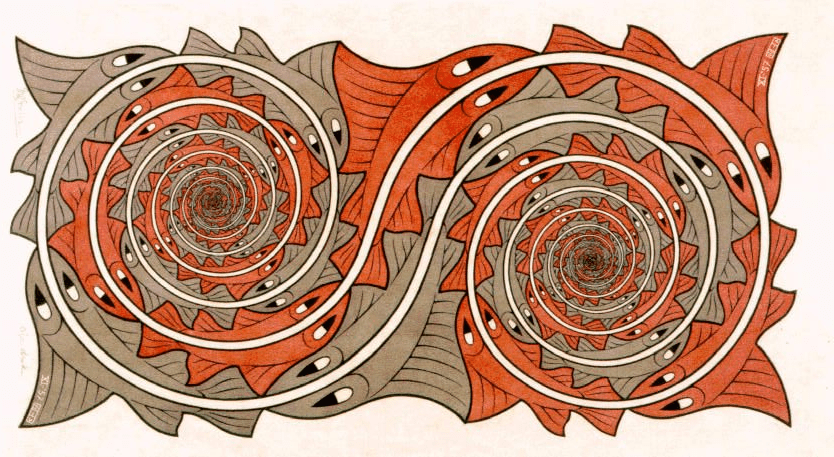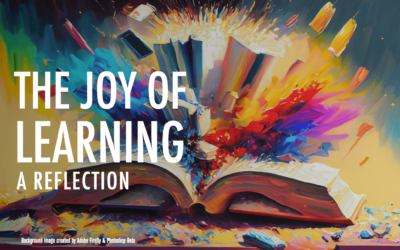Mishra & Yadav (2006) was a paper based around my dissertation research. It took a while to get published and I am including it here for the record. My dissertation (Mishra, 1998) was maybe the first place where I made a specific mention of the triad of constructs: Technology, Pedagogy & Content that later developed into the TPACK framework. I must add that I used the word “learning theory” or “theory” in place of “pedagogy” in my dissertation. By the time this paper came out our key TPACK paper (Mishra & Koehler, 2006) was already in press – so this paper refers to our further crystallized thinking about these issues.
Mishra, P., & Yadav, A. (2006). Using hypermedia for learning complex concepts in chemistry: A qualitative study on the relationship between prior knowledge, beliefs and motivation. Education and Information Technologies. 11(1), 33-69. [Click link to download PDF.]
Abstract and an ambigram follow:
Abstract This paper reports the results of a qualitative study on the process of learning complex concepts in chemistry by four students as they worked with FLiPS (Flexible Learning in the Periodic System), a cognitive ?exibility multi-media hypertext for learning about the periodic system of elements. A wide range of probes (think-alouds; navigation logs; observational notes, interviews; pre- and post-tests; epistemic beliefs survey; and background questionnaire) produced a rich data set for analysis. This data was analyzed to construct rich narrative case- and cross-case narratives of the participants’ process of working and learning in this complex hypertext environment. This multi-level analysis offers insight both into the ?ne-grained process of use as well as the larger issues of the pedagogical significance of FLiPS. Our analysis reveals a complex relationship between epistemic beliefs, student motivation, prior knowledge, and process of learning from hypertext. We offer implications for future research, design and the application of pedagogical hypertexts.
There are a couple of ambigrams I had created that may be of interest. The first was a rotational ambigram for FLiPS, the software program/website I had created.

And the other was for Cognitive Flexibility Theory (CFT). In this image the central shape throws three different shadows depending on the source of the light. The three shadows are the letter C, F and T. The key idea of CFT is that one can get a deeper understanding of a topic by throwing light on it (or traversing it) from different directions or perspectives. This triplet-ambigram is my attempt to visually represent this idea.




Admiring the time and effort you put into your blog and detailed information you offer! I will bookmark your blog and have my friends also check up here often. Thumbs up!
Dear Kiran,
What a wonderful coincidence… it appears we share an interest beyond TPACK and it includes science and multiple representations. Turns out my dissertation was based on similar ideas. The Mishra & Yahya paper (link to pdf above) is a good synopsis of the work I did then. I agree with you that “Pedagogical Content Knowledge explains that teachers transform information, use multiple representations and customize instructional materials to teach.” However I would go further than just saying that one would need to “map appropriate technology to various modes of representations and Science learning objectives.” The point of the matter is that technology allows for representations that were just not possible in the past. Which means that the relationship between C and P is complicated by the presence of T. It is not just C and P taking help from T but rather all three working together. Does that make sense?
thanks
HI Punya,
I was browsing multiple representations and CFT and I came accross your TPACK blog coincidentally. 🙂
I really wanted to write this note to comment that your CFT ambigram is excellent!
But since im here writing you a note, allow me share with you the idea of my research problem in a few words… Here it goes:
Working on premise of the Cognitive Flexibility Theory, i am proposing that Science learning can be enhanced if multiple representations of a concept is presented by the teacher or explored by the student (even outside class).
Technology tools allows students to receive information, test and explore processes, and constructively create new knowledge — tapping various modes of learning.
If technology is used to present multiple representations of a concept in Science, then perhaps (1) the student would learn the material / concept according to how he or she understands best; and (2) students would be more motivated to learn from various resources.
Perhaps this would address the learning problem that students in the Philippines are poor in conceptual mastery and understanding at Secondary Science.
Pedagogical Content Knowledge explains that teachers transform information, use multiple representations and customize instructional materials to teach. Applying the TPACK framework, I intend to map appropriate technology to various modes of representations and Science learning objectives.
What do you think of this idea?
I am very much open to comments or suggestions for future directions of this research.
Thankyou again,
Kiran